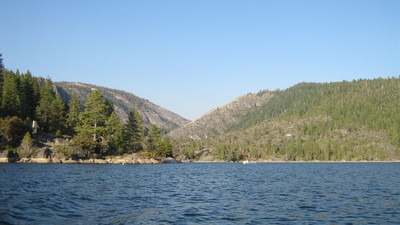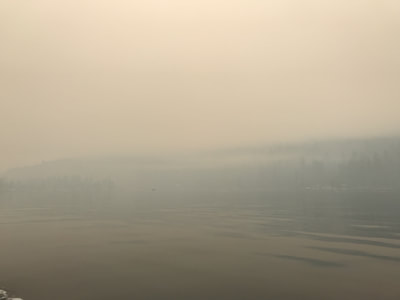SOCIALS
California's 'wild' fire season
In: Personal
Tags: #climate change #wildfires #environment #family
California is warmer, dryer, and more prone to catastrophic wildfires. Those are just the facts. How we got here and what we can do to mitigate are open for debate.
This topic hit me personally this year, but not as personally as it could have been. I didn't lose a loved one or any property. By that measure I really can't complain, but I did lose some cherished family time at my family's summer cabin in Pinecrest Lake. The smoke was unbearable due to the Ferguson fire raging in Yosemite, over 40 miles away. Even after we drove the 150 miles back home the smoke was still visible around Mount Diablo. It speaks to the amount of environmental devastation accumulated on the land and in the air as 100,000 acres of Sierra forest burn.
Here's how Pinecrest was impacted. These are two pics, same time of day, same vantage point on the lake, to show how crazy bad the smoke got. It's really sad.


In the US as a whole, 2017 was the second-worst year for wildfires in over 60 years, missing the ominous #1 spot by only 1%, a record set just two years earlier. I believe this trend is the culmination of many trends, including warmer sea temperatures (Ocean temperature off San Diego coast is warmest in 102 years of measurements). The trends are clear. What's less clear is what to do about it.
I still contend that our housing problem plays a major role in global warming. In Contra Costa County, nearly half of county-wide greenhouse gas omissions come from on-road transportation. A lot of that transportation is done during commute hours from people traveling in and out of the county or across the county because they can't afford to live closer to where they work. There's only so much public transportation can do, especially when proximity to BART drives up property values.
I'm glad to see politicians like David Chiu and Tim Grayson taking up this issue in AB 2923. This bill would establish "transit-oriented development" zoning standards and require them to be issued within specified boundaries of BART stations. The idea is simply that the land around BART stations should be development into more housing and the state can't wait idly while local governments hem and haw over the details. It's a bold move, one that puts the state at odds with local authorities, but I respect the initiative. Sometimes, in business as in government, you need to force a door open.
And that's the thought I return to on the top of the wildfires. California residents will not sit idly through another smokey summer. If this happens again next year I bet there will be protests, critiques, and policy mandates to keep the smoke (and not to mention the greenhouse gases) out of our air. I suspect a door or two will be forced open to deal with it.
More from Personal
- A short essay on free will - Tue 11 June 2024
- What I want in 2024 - Mon 01 January 2024
- The importance of mentors - Sun 05 November 2023